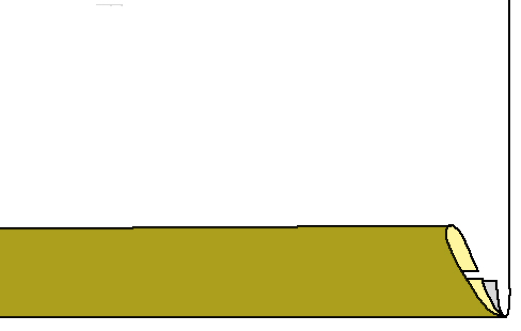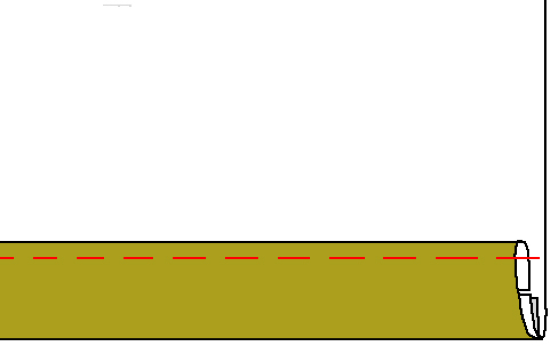A hem is a fold sewn on the edge of fabrics, to finish a garment nicely. It also prevents fabric from fraying overtime.
Many types of hems exist, such as:
- the double-fold hem: the more used;
- the bias-bound hem: sewn with a stripe of fabric on the inside of the garment,
- the blind hem: as its name implies, it is invisible and it is often used to finish the bottom of a skirt or pants,
- the cuffed hem: to add a nice cuff to pants for instance,
- the rolled hem: the edge of a lightweight fabric is rolled on itself intricately then sewn by hand (often). However, the serger can achieve this type of hem thanks to the rolled-hem presser foot.
- The single-fold hem: it’s a hem with one fold,
These are words you will likely meet during your time as a sewist. However, when you sew a garment, you won’t have to know how to sew all of these. Two types of hems will be enough to get nice finishings.
THE DOUBLE-FOLD HEM
The most commonly used hem! This hem is sewn by folding the fabric along the edge twice, i.e. turning the fabric under twice on the wrong side.
In most cases, the fabric is turned under by 1cm on the wrong side, then it is turned under on the wrong side another time by 2cm. Once the hem has been pressed then it is either sewn by machine, stitching as close to the edge as possible or sewn by hand, using a slip stitch.

THE BIAS-BOUND HEM
Sewing a bias-bound hem means sewing a strip of fabric (or hem facing) along the edge to be finished, then to turn the strip of fabric on the wrong side of the edge. It is mostly used with curved edges. Cutting the hem facing in a contrasting fabric will add contrast to the garment, giving it some extra flair.
This hem is usually sewn with bias tape, but you can also use some hem facing that will be the same size as the edge and, as such, it will perfectly match the curve of that edge. The advantage of the hem facing over the bias tape is that the hem can be as wide as you choose.
To sew a bias-bound hem,
- With right sides together, pin the edge hem facing/bias tape to the edge (bottom of garment/sleeve). Sew in place at 1cm from the edge. Clip the curves if any and press the seam flat.

- With wrong sides together, fold 1cm on the wrong side along the top edge of the facing/bias tape then turn it under, to the wrong side of the garment. Place the facing/bias tape well and pin it place. The small fold of the facing/bias tape if thus on the inside of the hem and to tally invisible from the outside.


- At last, stitch through all the layers, as close to the edge of the facing/bias tape.
From the wrong side

From the right side
